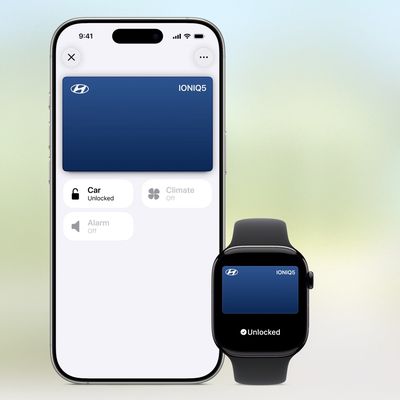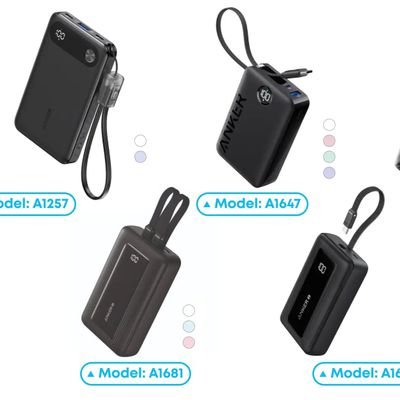Oculus Rift Won't Support Mac Until Apple Releases a 'Good Computer'
During a recent Xbox press event, ShackNews had an opportunity to speak with Oculus VR founder Palmer Luckey and asked him whether the company plans to implement Mac support for the Oculus Rift virtual reality headset.
In response to the question, Luckey said Oculus Rift support for the Mac was "up to Apple," and that the company needed to "prioritize higher-end GPUs." If Apple builds a machine that can handle the hardware, Oculus VR would "love to support Mac."
That is up to Apple and if they ever release a good computer we will do it. It just boils down to the fact that Apple doesn't prioritize high-end GPUs. You can a buy $6,000 Mac Pro with the top of the line AMD FirePro D700s and it still doesn't match our recommended spec. If they prioritize higher-end GPUs like they used to for awhile back in the day I think we'd love to support Mac.
Right now there's just not a single machine out there that supports it so even if we can support it on the software side there's just no audience of people that can run the vast majority of software out there.
The Oculus Rift, which is available for pre-order, will begin shipping out later this month to PC users. While Mac support was planned early on, work on a Mac version was halted once it became clear Mac machines would not have the graphics capabilities to power the headset.
As Luckey mentions, the Oculus Rift requires a computer with a powerful GPU. Oculus VR's recommended specs for the Rift include an NVIDIA GTX 970, AMD 290, or equivalent, because the Oculus Rift needs to render approximately 400 million shaded pixels per second. Mac machines, even the high-end ones, don't have the graphics power to handle that kind of system load.
On the raw rendering costs: a traditional 1080p game at 60Hz requires 124 million shaded pixels per second. In contrast, the Rift runs at 2160x1200 at 90Hz split over dual displays, consuming 233 million pixels per second. At the default eye-target scale, the Rift's rendering requirements go much higher: around 400 million shaded pixels per second. This means that by raw rendering costs alone, a VR game will require approximately 3x the GPU power of 1080p rendering.
With interest in virtual reality devices like the Oculus Rift picking up, Apple will need to focus more heavily on the graphics capabilities with Macs if it hopes to keep up with PC makers and avoid disappointing customers who want to use the latest technology and gaming peripherals. Rumors suggest Apple is even developing its own virtual reality headset, so there's a good chance the company is already well aware of the need for improved GPUs and working towards improvements.
Popular Stories
Apple hasn't updated the AirPods Pro since 2022, and the earbuds are due for a refresh. We're counting on a new model this year, and we've seen several hints of new AirPods tucked away in Apple's code. Rumors suggest that Apple has some exciting new features planned that will make it worthwhile to upgrade to the latest model.
Subscribe to the MacRumors YouTube channel for more videos.
Heal...
In 2020, Apple added a digital car key feature to its Wallet app, allowing users to lock, unlock, and start a compatible vehicle with an iPhone or Apple Watch. The feature is currently offered by select automakers, including Audi, BMW, Hyundai, Kia, Genesis, Mercedes-Benz, Volvo, and a handful of others, and it is set to expand further.
During its WWDC 2025 keynote, Apple said that 13...
Popular accessory maker Anker this month launched two separate recalls for its power banks, some of which may be a fire risk.
The first recall affects Anker PowerCore 10000 Power Banks sold between June 1, 2016 and December 31, 2022 in the United States. Anker says that these power banks have a "potential issue" with the battery inside, which can lead to overheating, melting of plastic...
Chase this week announced a series of new perks for its premium Sapphire Reserve credit card, and one of them is for a pair of Apple services.
Specifically, the credit card now offers complimentary annual subscriptions to Apple TV+ and Apple Music, a value of up to $250 per year.
If you are already paying for Apple TV+ and/or Apple Music directly through Apple, those subscriptions will...
Apple's next-generation iPhone 17 Pro and iPhone 17 Pro Max are around three months away, and there are plenty of rumors about the devices.
Apple is expected to launch the iPhone 17, iPhone 17 Air, iPhone 17 Pro, and iPhone 17 Pro Max in September this year.
Below, we recap key changes rumored for the iPhone 17 Pro models:Aluminum frame: iPhone 17 Pro models are rumored to have an...
Apple is developing a MacBook with the A18 Pro chip, according to findings in backend code uncovered by MacRumors.
Earlier today, Apple analyst Ming-Chi Kuo reported that Apple is planning to launch a low-cost MacBook powered by an iPhone chip. The machine is expected to feature a 13-inch display, the A18 Pro chip, and color options that include silver, blue, pink, and yellow.
MacRumors...
Apple is planning to launch a low-cost MacBook powered by an iPhone chip, according to Apple analyst Ming-Chi Kuo.
In an article published on X, Kuo explained that the device will feature a 13-inch display and the A18 Pro chip, making it the first Mac powered by an iPhone chip. The A18 Pro chip debuted in the iPhone 16 Pro last year. To date, all Apple silicon Macs have contained M-series...
Apple last month announced the launch of CarPlay Ultra, the long-awaited next-generation version of its CarPlay software system for vehicles.
There was news this week about which automakers will and won't offer CarPlay Ultra, and we have provided an updated list below.
CarPlay Ultra is currently limited to newer Aston Martin vehicles in the U.S. and Canada. Fortunately, if you cannot...
Apple will finally deliver the Apple Watch Ultra 3 sometime this year, according to analyst Jeff Pu of GF Securities Hong Kong (via @jukanlosreve).
The analyst expects both the Apple Watch Series 11 and Apple Watch Ultra 3 to arrive this year (likely alongside the new iPhone 17 lineup, if previous launches are anything to go by), according to his latest product roadmap shared with...






















